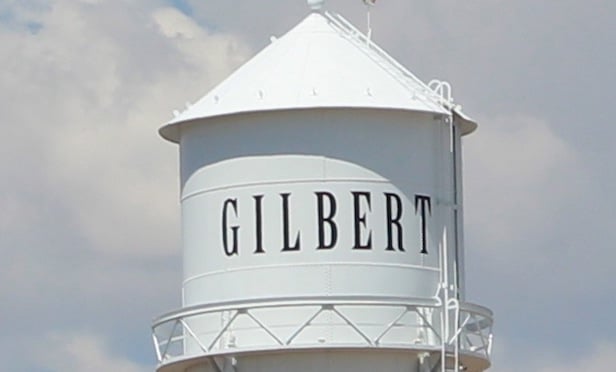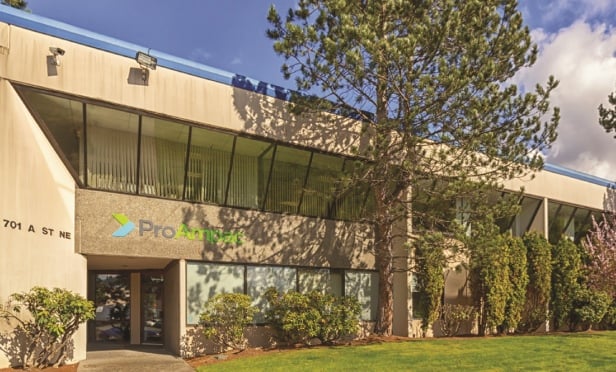WASHINGTON, DC—The Federal Housing Finance Agency officially unveiled its 2016 Scorecard for Fannie Mae and Freddie Mac [PDF] last week. Director Melvin Watt put the multifamily industry out of its suspenseful misery in October of this year when he said in a speech that the GSEs' multifamily lending cap would remain at $30 billion each. As it turned out, that was not strictly correct -- the cap has been set at $31 billion. Watt also said that the exclusions to the cap would be expanded, casually mentioning in an aside that energy efficiency would be on the list.
Now that the Scorecard has been published, let me spell out the implications of what the FHFA has done: By adding energy-energy efficient loans to the exclusions, it has overtly given the GSEs the mandate they needed to develop these product lines. In previous years green building finance was tacitly approved but, let's face it, for bureaucrats who can be summoned to Capitol Hill at any time to explain why they are doing XYZ with the tax payer's money, tacit doesn't always cut it.
In recent months there had been talk of the FHFA including energy efficiency provisions in an expected "Duty to Serve" proposal. Briefly, Duty to Serve is a proposal put forward by the FHFA expanding three specific underserved markets that the GSEs are to target. The FHFA has only released one Duty to Serve in the past several years. It released another one last week as well, which is now in the public comment period, after which it will be published in the Federal Register. Briefly, the Duty to Serve proposal focuses on expanding affordable housing preservation, manufactured housing and rural housing. As it happens, there is language about energy efficient lending in the Duty to Serve proposal, which gives the GSEs even further run room for this sector.
Theoretically, the Duty to Serve and the Scorecard carry the same weight. However, with the energy efficient loans excluded from the cap, the GSEs can begin lending immediately, as opposed to waiting another 90 days.
Fannie Mae Ready to Execute Right Now
Realistically, it is Fannie Mae that is ready to start ramping up its production in energy-efficient lending.
While Freddie Mac has paid lip service to the idea of offering green finance loans over the years, it does not have an active product. A source tells GlobeSt.com that the GSE has been waiting for precisely this moment -- that is, an official go ahead from the FHFA to offer these products. It is highly likely that Freddie will introduce something in the first quarter of 2016.
Fannie Mae, by contrast, has forged ahead in this area over the past few years, introducing products to support sustainable multifamily development and retrofits.
Its green financing programs include Green Rewards, Green Preservation Plus, and the Green Building Certification Pricing Break, all of which are eligible for a 10 basis points reduction in the all-in interest rate.
This year it introduced a program called the Multifamily Green Building Certification Pricing Break, which offers qualifying properties -- namely a project that has one of the eight certifications that Fannie Mae recognizes -- a 10 basis point interest rate reduction on loans for multifamily refinance, acquisition or supplemental mortgage loan.
Fannie Mae's Stuyv Town Loan Gets Excluded in 2016
Jeff Hayward, Fannie Mae's Executive Vice President for Multifamily, is not shy in calling in describing the GSE's expertise in underwriting sustainable finance products.
"We understand this market very well and we have been positioning our platform so that as this came about [FHFA's recent measures] we would be ready," he tells GlobeSt.com. Fannie Mae is ready to execute, he said. "We don't have to develop anything new."
In addition, it has experience in the nuances covered in the Scorecard, he said. One of the exempt categories, Hayward noted, are loans on properties developed under state or local inclusionary zoning, real estate tax abatement or similar programs -- basically any government agreement with the property owner in which the property owner has agreed to restrict some of the units for occupancy by tenants with limited incomes.
Any guess what major deal falls under that description? Blackstone Group and Ivanhoe Cambridge's just closed acquisition of Stuyvesant Town-Peter Cooper Village, which Fannie Mae is financing.
And yes, it will be excluded from Fannie Mae's 2016 production cap because it won't be providing the financing until next month.
© Touchpoint Markets, All Rights Reserved. Request academic re-use from www.copyright.com. All other uses, submit a request to [email protected]. For more inforrmation visit Asset & Logo Licensing.







